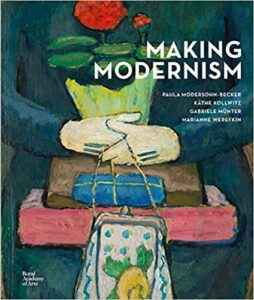-
 Out of stock
Out of stock
R660“Anyone who directly and genuinely renders what drives him to create is one of us,” proclaimed the manifesto of Die Brücke (The Bridge), a close-knit group of artists who first met in Dresden in 1905. Its founding members were four Jugendstil architecture students: Fritz Bleyl, Erich Heckel, Karl Schmidt-Rottluff and Ernst Ludwig Kirchner. Eschewing the contemporary academic styles and subjects, these four artists instead looked to their German art heritage to make…
-
Sale!

R750 Original price was: R750.R675Current price is: R675.After Egon Schiele (1890–1918) freed himself from the shadow of his mentor and role model Gustav Klimt, he had just ten years to inscribe his signature style into the annals of modernity before the Spanish flu claimed his life. Being a child prodigy quite aware of his own genius and a passionate provocateur, this didn’t prove to be too big a challenge.
His haggard, overstretched figures, extreme depiction of sexuality and self-portraits, in which he staged himself with emaciated facial expressions bordering between brilliance and madness, had none of the decorative quality of Klimt’s hymns of love, sexuality and yearning devotion. Instead, Schiele’s work spoke of a brutal honesty, one that would upset and irreversibly change Viennese society.
-

R1125The exhibition catalogue features in-depth investigations of major themes and a wide variety of spotlight essays to shine a light on a remarkable artistic group: their travels and techniques, their interests and sources of inspiration, and the relationships that bound them together.
-

R625Käthe Kollwitz (1867–1945), Paula Modersohn-Becker (1876–1907), Gabriele Münter (1877–1962) and Marianne Werefkin (1860–1938) are among the exceptional artists associated with the emergence of Expressionism in Germany in the early decades of the 20th century. Each challenged prevailing ideals of feminine identity at a time of great societal change. As women, they were expected to marry and raise a family; some chose to, some did not. As ambitious artists, they wanted to work.
As they rose to these challenges, their art further undermined conventions. Their portraits of children symbolize joy, hope and innocence but also melancholy, tension, curiosity, the passing of time and unfulfilled desire. Their radical depictions of the nude wrest the female body away from the male gaze toward a newfound role, expressive of powerful maternity and female subjectivity.
-

R80The term `Expressionist’ was initially applied to French modern painting displayed in a Berlin Secession exhibition of 1911. By the time of the First World War; the broader concept of `Expressionism’ permeated German metropolitan culture at many levels. Though lacking stylistic cohesion, the movement was united by a rejection of Impressionism and a search for an inner, essential reality behind the external world of appearances.





